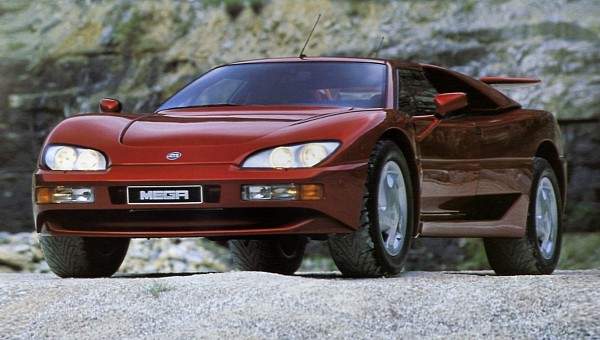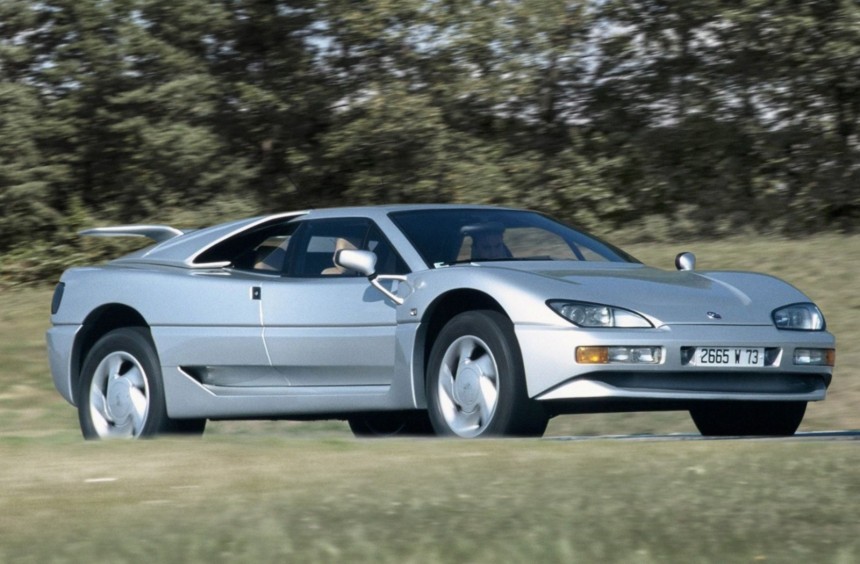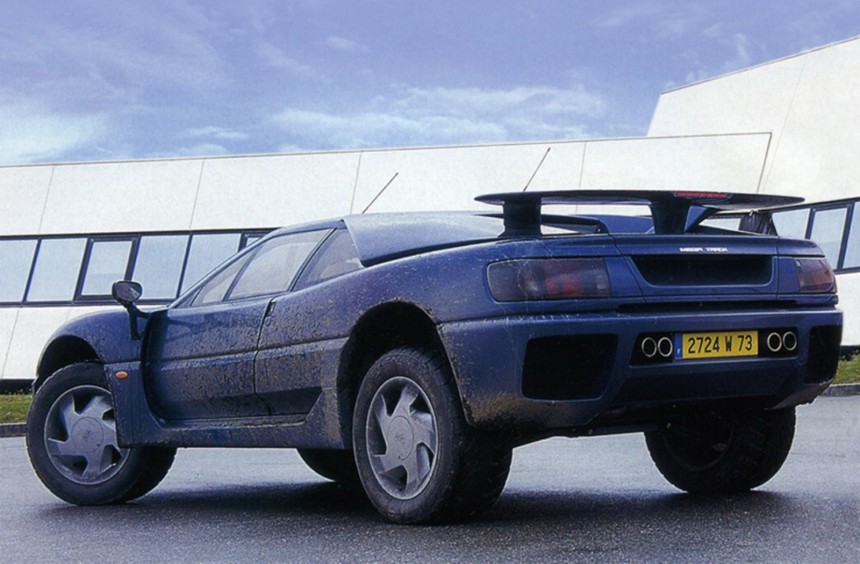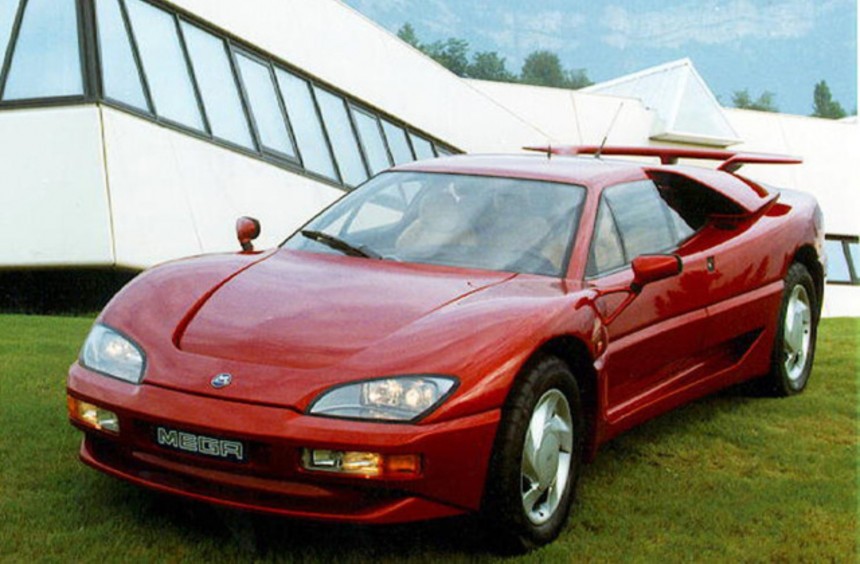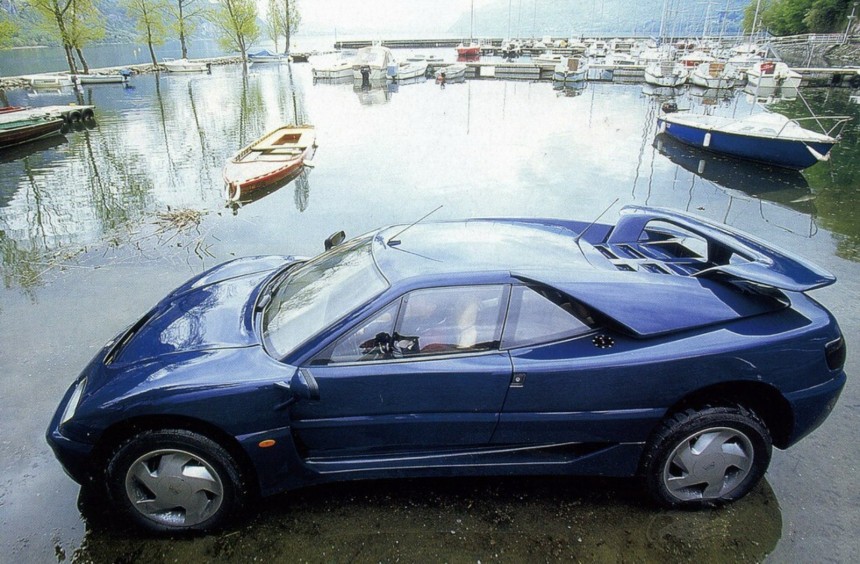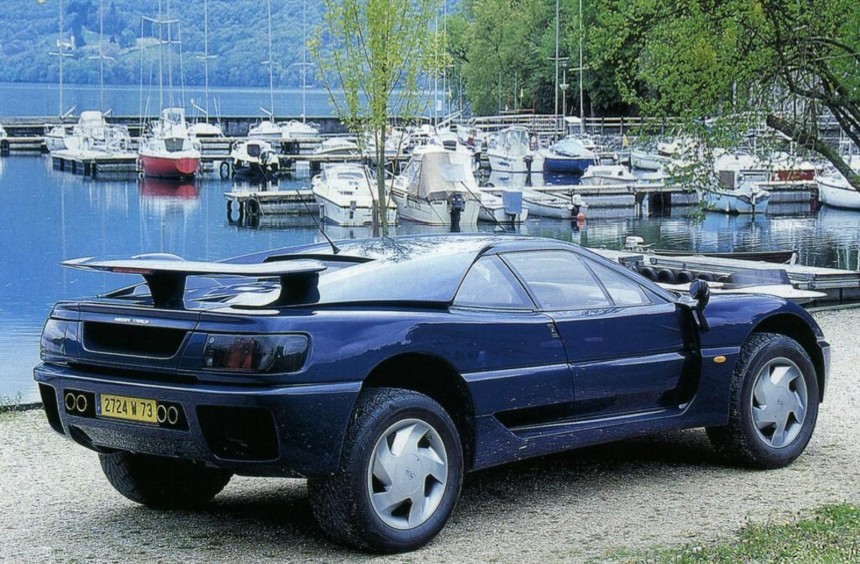Although extremely popular today, crossovers are often just overweight hatchbacks or wagons with limited off-road capabilities. However, things were different back in the early-1990s when a V12-powered supercar with all-wheel-drive and ample ground clearance was roaming the roads (and trails).
These days, the automotive industry is fixated on SUVs, crossovers, and electric powertrains, but three decades ago, the emphasis was on high performance. The 1990s will always be remembered as the supercar decade. From the industry’s biggest names to small companies that came out of nowhere, everyone was developing a high-performance sports car.
During that decade, the cradle of the supercar was Europe. Iconic rides that adorned tens of millions of bedroom walls like the Lamborghini Diablo, Bugatti EB110, McLaren F1, and Ferrari F50 were all born on the Old Continent.
Apart from these legends, Europe also gave us plenty of other interesting supercars during the 1990s, but since they didn’t come from established brands, these models faded into obscurity soon after they were introduced. Arguably the most interesting and unique example was Axiam’s Mega Track, the most exciting crossover ever created.
In France, well-known manufacturers like Renault, Peugeot, and Citroen decided against adding a supercar to their lineup during the 1990s. Despite this, smaller French companies ventured into this popular segment with the most famous example being the Venturi 400 GT.
While the 400 GT was a typical high-performance sports car inspired by the Ferrari F40, the Mega Track was anything but typical and it came from a company that built microcars.
Founded in 1983, Axiam became one of Europe’s leading microcar manufacturers thanks to models like the 325D (no relation to BMW’s 3 Series diesel) and 400D, tiny, city-friendly vehicles that could be driven as soon as one turned sixteen.
By the early-1990s, sales of Axiam microcars were flourishing, so the company’s management decided to enter the full-size car market. But surprisingly, they chose to set their sights on the booming supercar segment.
With many breathtaking supercars from the likes of Ferrari or Lamborghini already roaming the streets, the microcar company needed to refresh its image and come up with something different in order to be successful.
The first step was to launch a new brand called Mega, followed by the idea of building a versatile supercar that could be used for an unforgettable summer tour of the French riviera as well as for a winter excursion to a remote sky resort in the Alps without worrying about road or weather conditions.
With that in mind, the company handed the project to a team led by promising engineer Philippe Colançon and experienced rally driver Bernard Darniche.
Work on the car christened Track started in February 1992 and a prototype was completed eight months later, in time for the Paris Motor Show.
Following the classic supercar recipe, the team put together a tubular steel spaceframe chassis. But, unlike similar vehicles, the prototype was equipped with an air suspension system that made it possible to modify ground clearance from a minimum of 8 inches (203 mm) to a maximum of 13 inches (330 mm), which meant that the Mega Track could ride higher than a modern Ford F-150 pickup truck.
For the mid-mounted powerplant, engineers initially wanted to employ a France-built unit, but with the weight of the car set to exceed 4,400 pounds (2,000 kg), they couldn’t find anything that delivered adequate power without sky-high costs. Therefore, they struck a deal with Mercedes-Benz for its newly-introduced M120 V12. A naturally aspirated unit that would go on to power multiple iterations of the Pagani Zonda, the twelve-cylinder in its stock 6.0-liter configuration could deliver a healthy 394 hp (399 ps) and 420 lb-ft (570 Nm) of torque.
With the addition of a 4WD system and a four-speed manual (presumably also borrowed from the Germans), the Track tipped the scales at 5,026 pounds (2,280 kg), so the performance figures were not particularly impressive. According to the company, the unique crossover could sprint to 62 mph (100 kph) from a standstill in 5.8 seconds and reach a top speed of 155 mph (250 kph). These figures were nowhere near what other supercars could achieve, yet none could be driven off-road.
With the exception of the unusually-high ground clearance, the Track looked exactly like any other 1990s supercar. Its body was a combination of curves and aggressive lines with ample side vents and a massive rear spoiler.
But what the pictures don’t capture is just how massive this car was. It measured 16.6 feet (5.08 meters) in length, which made it longer than a W140 S-Class coupe and just a fraction smaller than the sedan version. Moreover, it was wider than a Humvee at 7.2 feet (2.2 meters) and weighed more than two Venturi 400 GTs.
While these dimensions made parking a nightmare in a crowded French city, engineers were able to design a rather spacious cabin that could comfortably accommodate taller people in the front seats and left adequate legroom for the two occupants in the rear.
The Mega Track was unveiled at the 1992 Paris Motor Show where it was the star attraction. People were flocking to the Axiam booth to see the world’s first off-road-capable supercar, and many wanted to buy one even if it was projected to cost over $400,000 ($852,943, today).
Legend has it that the company received hundreds of orders in the span of just a few days and several hundred more followed after the show concluded.
Unfortunately, the microcar manufacturer never expected that level of interest and didn’t have the tools nor the manpower to produce the Track in large numbers. During the following years, efforts were made to build or rent a factory capable of coping with the demand, but by the time Axiam found a solution, interest in the model had dwindled and focus had shifted to a new supercar project: the Mega Monte Carlo. Despite this, multiple examples were built and delivered to customers in 1995. The official figure was never released, but, according to multiple sources, only five Tracks were made.
Though few people remember it today, the Mega Track was an awesome vehicle and the perfect example of a crossover done right. In recent years, manufacturers like Lamborghini and Porsche introduced limited-edition versions of the 911 and Huracan models that have some off-road capabilities, but neither are as impressive as this humongous French beast.
YouTuber Thomas Bode spotted one in the wild back in 2012 and he takes us on a virtual walkaround in the video below.
During that decade, the cradle of the supercar was Europe. Iconic rides that adorned tens of millions of bedroom walls like the Lamborghini Diablo, Bugatti EB110, McLaren F1, and Ferrari F50 were all born on the Old Continent.
Apart from these legends, Europe also gave us plenty of other interesting supercars during the 1990s, but since they didn’t come from established brands, these models faded into obscurity soon after they were introduced. Arguably the most interesting and unique example was Axiam’s Mega Track, the most exciting crossover ever created.
From microcars to supercars
While the 400 GT was a typical high-performance sports car inspired by the Ferrari F40, the Mega Track was anything but typical and it came from a company that built microcars.
Founded in 1983, Axiam became one of Europe’s leading microcar manufacturers thanks to models like the 325D (no relation to BMW’s 3 Series diesel) and 400D, tiny, city-friendly vehicles that could be driven as soon as one turned sixteen.
By the early-1990s, sales of Axiam microcars were flourishing, so the company’s management decided to enter the full-size car market. But surprisingly, they chose to set their sights on the booming supercar segment.
Daring to be different
The first step was to launch a new brand called Mega, followed by the idea of building a versatile supercar that could be used for an unforgettable summer tour of the French riviera as well as for a winter excursion to a remote sky resort in the Alps without worrying about road or weather conditions.
With that in mind, the company handed the project to a team led by promising engineer Philippe Colançon and experienced rally driver Bernard Darniche.
Chassis, engine, and performance figures
Following the classic supercar recipe, the team put together a tubular steel spaceframe chassis. But, unlike similar vehicles, the prototype was equipped with an air suspension system that made it possible to modify ground clearance from a minimum of 8 inches (203 mm) to a maximum of 13 inches (330 mm), which meant that the Mega Track could ride higher than a modern Ford F-150 pickup truck.
For the mid-mounted powerplant, engineers initially wanted to employ a France-built unit, but with the weight of the car set to exceed 4,400 pounds (2,000 kg), they couldn’t find anything that delivered adequate power without sky-high costs. Therefore, they struck a deal with Mercedes-Benz for its newly-introduced M120 V12. A naturally aspirated unit that would go on to power multiple iterations of the Pagani Zonda, the twelve-cylinder in its stock 6.0-liter configuration could deliver a healthy 394 hp (399 ps) and 420 lb-ft (570 Nm) of torque.
With the addition of a 4WD system and a four-speed manual (presumably also borrowed from the Germans), the Track tipped the scales at 5,026 pounds (2,280 kg), so the performance figures were not particularly impressive. According to the company, the unique crossover could sprint to 62 mph (100 kph) from a standstill in 5.8 seconds and reach a top speed of 155 mph (250 kph). These figures were nowhere near what other supercars could achieve, yet none could be driven off-road.
Longer than an S-Class and wider than a Humvee
But what the pictures don’t capture is just how massive this car was. It measured 16.6 feet (5.08 meters) in length, which made it longer than a W140 S-Class coupe and just a fraction smaller than the sedan version. Moreover, it was wider than a Humvee at 7.2 feet (2.2 meters) and weighed more than two Venturi 400 GTs.
While these dimensions made parking a nightmare in a crowded French city, engineers were able to design a rather spacious cabin that could comfortably accommodate taller people in the front seats and left adequate legroom for the two occupants in the rear.
A successful debut followed by a slide into anonymity
Legend has it that the company received hundreds of orders in the span of just a few days and several hundred more followed after the show concluded.
Unfortunately, the microcar manufacturer never expected that level of interest and didn’t have the tools nor the manpower to produce the Track in large numbers. During the following years, efforts were made to build or rent a factory capable of coping with the demand, but by the time Axiam found a solution, interest in the model had dwindled and focus had shifted to a new supercar project: the Mega Monte Carlo. Despite this, multiple examples were built and delivered to customers in 1995. The official figure was never released, but, according to multiple sources, only five Tracks were made.
Though few people remember it today, the Mega Track was an awesome vehicle and the perfect example of a crossover done right. In recent years, manufacturers like Lamborghini and Porsche introduced limited-edition versions of the 911 and Huracan models that have some off-road capabilities, but neither are as impressive as this humongous French beast.
YouTuber Thomas Bode spotted one in the wild back in 2012 and he takes us on a virtual walkaround in the video below.
